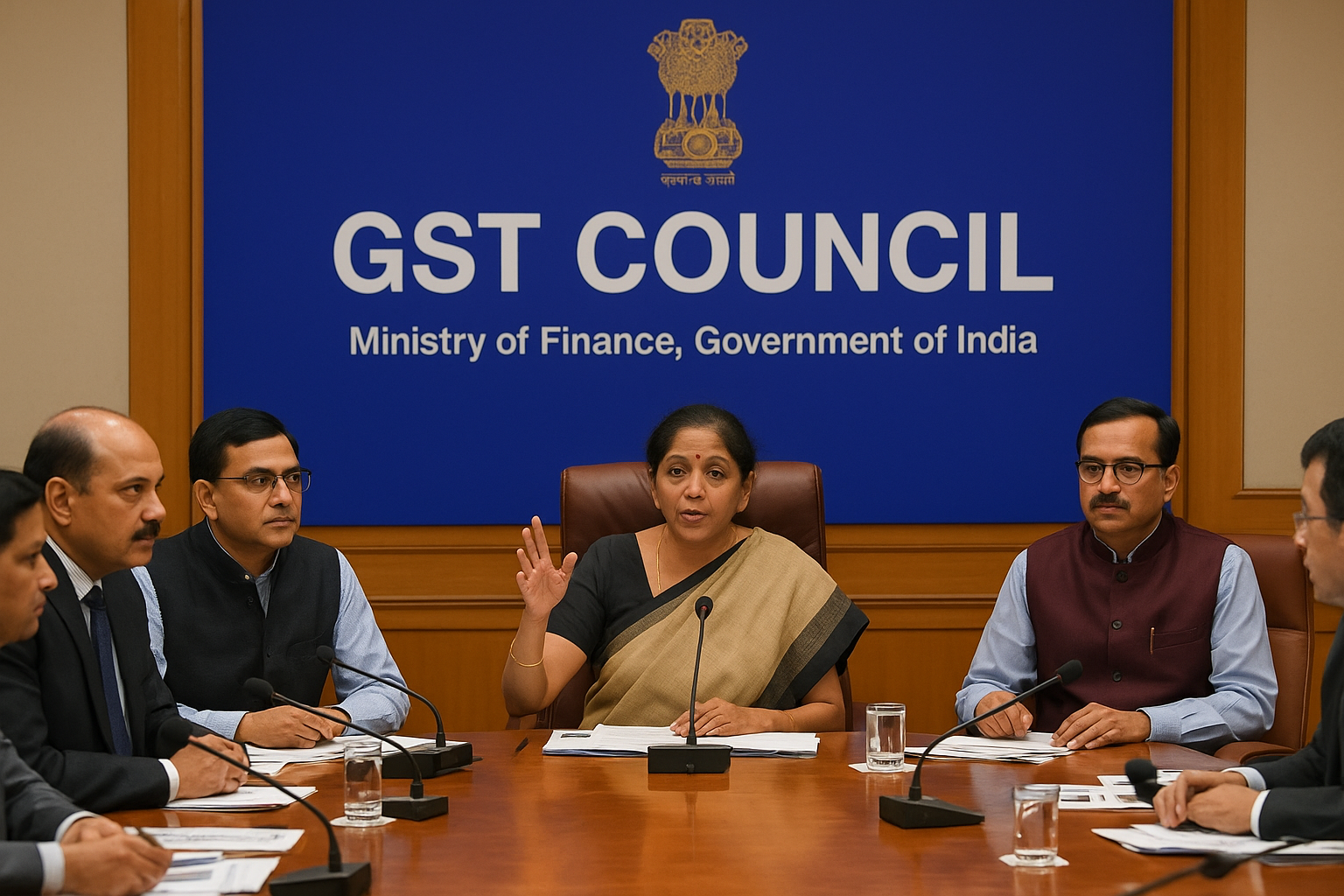Latest GST Council Decisions – September 2025
The GST Council, led by Finance Minister Nirmala Sitharaman, has approved a major overhaul of the GST system. The changes are set to roll out from September 22, 2025.
Key Changes
- Simplified Tax Slabs
- Current four slabs (5%, 12%, 18%, 28%) will be replaced with just two main rates: 5% and 18%.
- A new 40% slab will apply only to luxury and harmful goods (tobacco, pan masala, high-end cars, sugary drinks, etc.).
- What Gets Cheaper
- Daily essentials such as milk, paneer, roti, medicines, and farm equipment.
- Life and health insurance policies will now have zero GST.
- Many consumer items like soaps, toothpaste, and household goods will attract only 5% GST.
- What Gets Costlier
- Goods like air-conditioners, large TVs, dishwashers, and smaller cars/motorcycles will come under the 18% GST bracket.
- Luxury products such as expensive vehicles, yachts, tobacco products, and gambling services will be taxed at 40%.
- Relief for Exporters
- Exporters with GST refund claims below ₹1,000 will now get faster refunds, helping small businesses and improving liquidity.
Impact
- Consumers: Lower prices on essentials and insurance premiums.
- Small Businesses & Farmers: Reduced input costs and easier compliance.
- Electronics & Automobiles: Mid-range goods fall under 18% GST.
- Luxury/Sin Goods: Heavy taxation to curb consumption and increase government revenue.
- Export Sector: Quicker refunds to support small exporters.
This reform is being called “GST 2.0”, the biggest change since GST was launched. It aims to make the tax system simpler, cut costs for the common man, and boost demand ahead of the festive season.
The 56th GST Council meeting began on September 3 and will conclude on September 4, 2025. Final decisions are expected after the meeting wraps up.
Key Points Under Discussion
- Simplified Tax Structure: The council is considering moving towards just three slabs – 5% for essentials, 18% for most goods and services, and 40% for luxury and sin goods such as tobacco and high-end cars.
- Rate Adjustments: Items currently taxed at 12% (like butter, juices, and dry fruits) may shift to 5%, while many goods under 28% could move down to 18%.
- Luxury EVs: Electric vehicles in the premium segment could see higher GST, possibly up to 18% or even 40%, sparking concerns in the auto sector.
- Consumer Relief: Everyday essentials and nearly 175 items could become cheaper if lower slabs are approved.
- State Concerns: Several states want compensation for possible revenue losses if rates are reduced.
- Compliance Reforms: The council is also exploring simplified return filing systems to reduce paperwork for businesses.
Market Reactions
- Stocks in hotel, footwear, and FMCG sectors gained on hopes of tax cuts.
- Automobile and consumer durable companies may also benefit from lower GST rates.
- Concerns remain for luxury EV makers, as higher levies could slow adoption.
What’s Next?
- The final outcome will be announced on September 4, 2025.
- Implementation is likely to begin around late September, coinciding with the festive season.

